



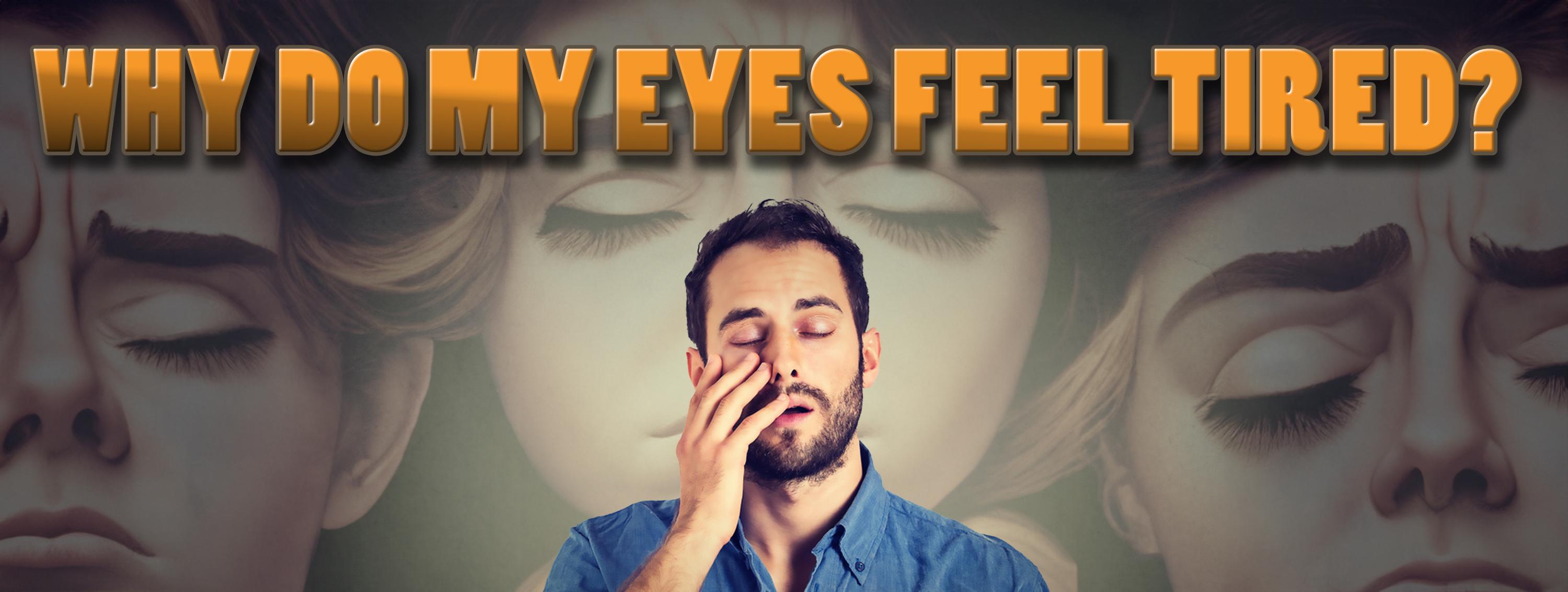
With the increased use of computers and other electronic devices (increased screen time) and the regular stresses of life, a lot of people feel like their eyes get tired during the day.
On a regular basis, probably around 10-20 times a day, I discuss the problems of eyestrain or dry eyes with my patients.
While this may sound like a minimal problem, dry eyes or eyestrain is a big issue that affects millions of people around the world on a daily basis.
WHAT IS EYESTRAIN OR DRY EYE?

Whenever we use our eyes for an extended period, especially when it is an activity that requires a lot of attention, we tend not to blink as often.

Blinking is an essential component of eye health, as it rewets the surface of the front of the eye (the cornea) and allows even distribution of the tear film over the entire front surface of the eyeball. If you don’t blink regularly, your eyes dry out. You can experience symptoms such as blurred vision, variable vision, fatigue, diffuse eye pressure, eye pain, or simple tiredness.
HOW CAN I TREAT MY TIRED EYES?
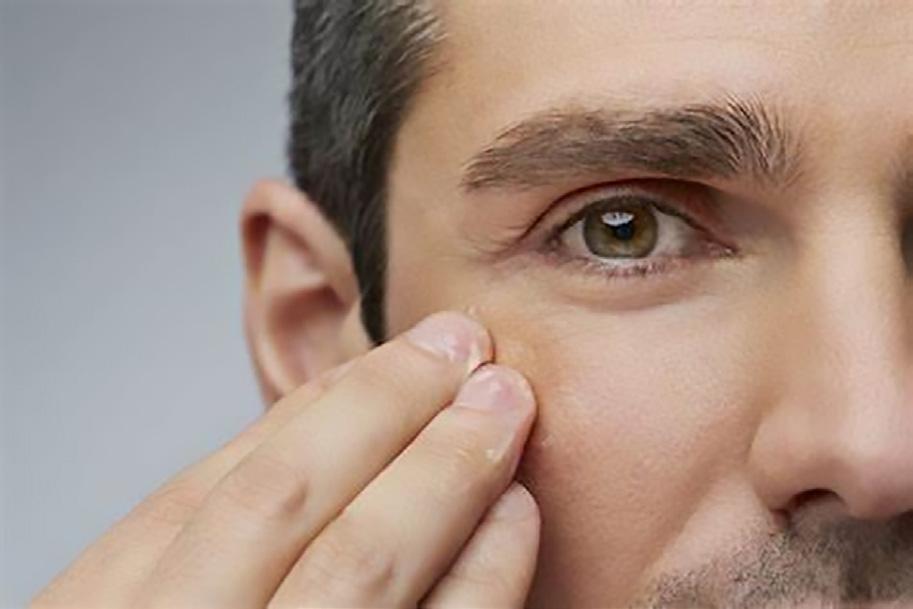
There are several easy strategies to treat eyestrain, many of which are consistent with a normal healthy lifestyle.
First, proper hydration is key. Unless a person has health conditions that prevent them from drinking a lot of fluids, you should drink at least 4-6 glasses of water a day.
Drinks like diet sodas, iced tea, coffee, and most energy drinks don’t count as methods of hydration. (In fact, they usually dehydrate you.)
Getting proper sleep cannot be over-emphasized, as it has countless benefits.

An adult should aim to get 7-8 hours of sleep (if not more) every night.
PROPER SLEEP, HYGIENE WILL ALSO HELP MINIMIZE EYESTRAIN.
Oral supplements like fish oil or omega-3 oil have been shown to increase the lubrication of the eye (and have tremendous other health and cardiac benefits).
While using your eyes for a long period of time isn’t
Contact: Phone: (347) 600-5347
cartasaoeditor@aol.com
www.omensageiro7.com
©2023 by: O Mensageiro7Inc.
All Rights Reserved
The Newspaper O Mensageiro7 is a monthly publication via ONLINE in English, Portuguese, and Spanish.
Reproduction in whole or in part of the context of the publication without proper permission is expressly prohibited.
O Mensageiro7 Newspaper is not responsible for the insertion of photos, logos, slogans, errors or omissions by advertisers or information provided by third parties, edited in any part of this publication.
Articles, messages, interviews, and studies published in this Newspaper, by each author, do not necessarily reflect the opinion of the Editor.
Each writer is responsible for their own content.
Therefore, each author is available to answer the reader's questions.
harmful, excessive reading can dry out the eyes, regardless of whether this is a computer screen, tablet, book, or magazine.
In addition to the abovementioned interventions, you should blink regularly (usually this is involuntary) and blink intentionally every 5 minutes.

Every 20-30 minutes, it may be useful to stand up for a minute, blink a few times, and take a few sips of water.
If you have eye conditions that require regularly using medicated drops (for example, glaucoma eyedrops), remember that these eyedrops can lead to further dryness and/or eye irritation.
Using these medications can make it even more likely that you may be prone to dry eye or eyestrain, and the above interventions are even more important to follow.

With the increasing use of electronic devices in all our lives, eyestrain will be a reality for many of us.
Thankfully, a few simple steps will allow most individuals to live productive and comfortable lives without major problems from eyestrain.
SOURCE: WebMD Expert Blog © 2023 WebMD, LLC.
All rights reserved.
With the increased use of computers and other electronic devices (increased screen time) and the regular stresses of life, a lot of people feel like their eyes get tired during the day.
If you don’t blink regularly, your eyes dry out.
El Niño and La Niña are dif ferent phases of a climate pattern that repeatedly oc curs in the tropical zone of the Pacific Ocean and is known as ENSO (El Niño-Southern Oscillation).
El Niño is a warming phe nomenon, while La Niña is a cooling phenomenon. The two factors follow one after the other, although there are often neutral conditions be tween them.
During El Niño events, the Pa cific surface warms, surface winds weaken and rainfall in creases in the southern and eastern part of the ocean. All this causes changes in air pressure at sea level, in temperature, in rainfall and in winds, not only in the tropics, but also in many other regions of the world.
La Niña events, however, have the effect of cooling the surface of the Pacific Ocean.
The consequences, like those of El Niño, can be felt all over
the planet. Since September 2020, the world has been under the effects of La Niña: it has been felt, for example, in the Horn of Africa and some regions of South America in the form of strong droughts, contrasting with heavy rainfall in Southeast Asia and Australasia.
After three consecutive years dominated by La Niña, the El Niño warming phenomenon could begin to gather momentum in the Pacific in the second half of 2023.
According to the WMO, there is more than a 50% chance of this happening, although, as is often the case with meteorology, this is still fraught with uncertainty.

How will El Niño affect the weather?
El Niño and La Niña are natural phenomena. Unlike climate change, they are not anthropogenic in origin.
However, the consequences of natural and man-made fac-

During El Niño events, the Pacific surface warms, surface winds weaken and rainfall increases in the southern and eastern part of the ocean.
tors can combine. This was the case in 2016, the warmest year since records began, due in large part to a combination of El Niño and the effects of climate change.
Since El Niño is a warming phenomenon, global temperatures are expected to rise over the next few years.

"There is a 93% probability that at least one year between 2023 and 2026 will be the warmest on record, and a 50% probability that global temperature will temporarily reach a rise of 1.5°C above the pre-industrial era average," the WMO has stated.
This leaves the planet in a vulnerable predicament, as the past eight years have already been the warmest period ever recorded (despite the influence of the La Niña cooling phenomenon for three years) due to the effects of anthropogenic climate change.
It is crucial to understand that a rise in global average
temperatures does not imply that it will be warmer all year round in all regions of the world.
In some areas, in fact, climatic phenomena caused by El Niño may lead to a drop in temperatures.
This is the case in Northern Europe, where winters can be drier and colder due to the behavior of the jet stream.
The jet stream, a current of powerful winds that carries rain across the Atlantic, may
also make conditions wetter in Southern Europe.
On the other side of the globe, in Australia, El Niño may mean less rainfall and higher temperatures, increasing the risk of droughts and forest fires.
In Latin America, close to the Pacific Ocean where the warming phenomenon originates, weather patterns are also likely to undergo serious changes. Tentative predictions point to a drier than usual season in the Amazon,
for example.
Climate phenomena often act like strategically placed dominoes: when one topples over, there is a cascading effect on all the others.
Today, it is impossible to predict exactly what the consequences of the return of El Niño will be, or when it will occur.
We can, however, anticipate a period of warming that will combine with the effects of climate change we already experience in our day-to-day lives. ◙
SOURCES: US Department of Health; The World Health Organization

Today, it is impossible to predict exactly what the consequences of the return of El Niño will be, or when it will occur.
What most of us think of as the Internet is really just the pretty face of the operation— browser windows, websites, URLs, and search bars.
But the real Internet, the brain behind the information superhighway, is an intricate set of protocols and rules that someone had to develop before we could get to the World Wide Web.
Computer scientists Vinton Cerf and Bob Kahn are credited with inventing the Internet communication protocols we use today and the system referred to as the Internet.
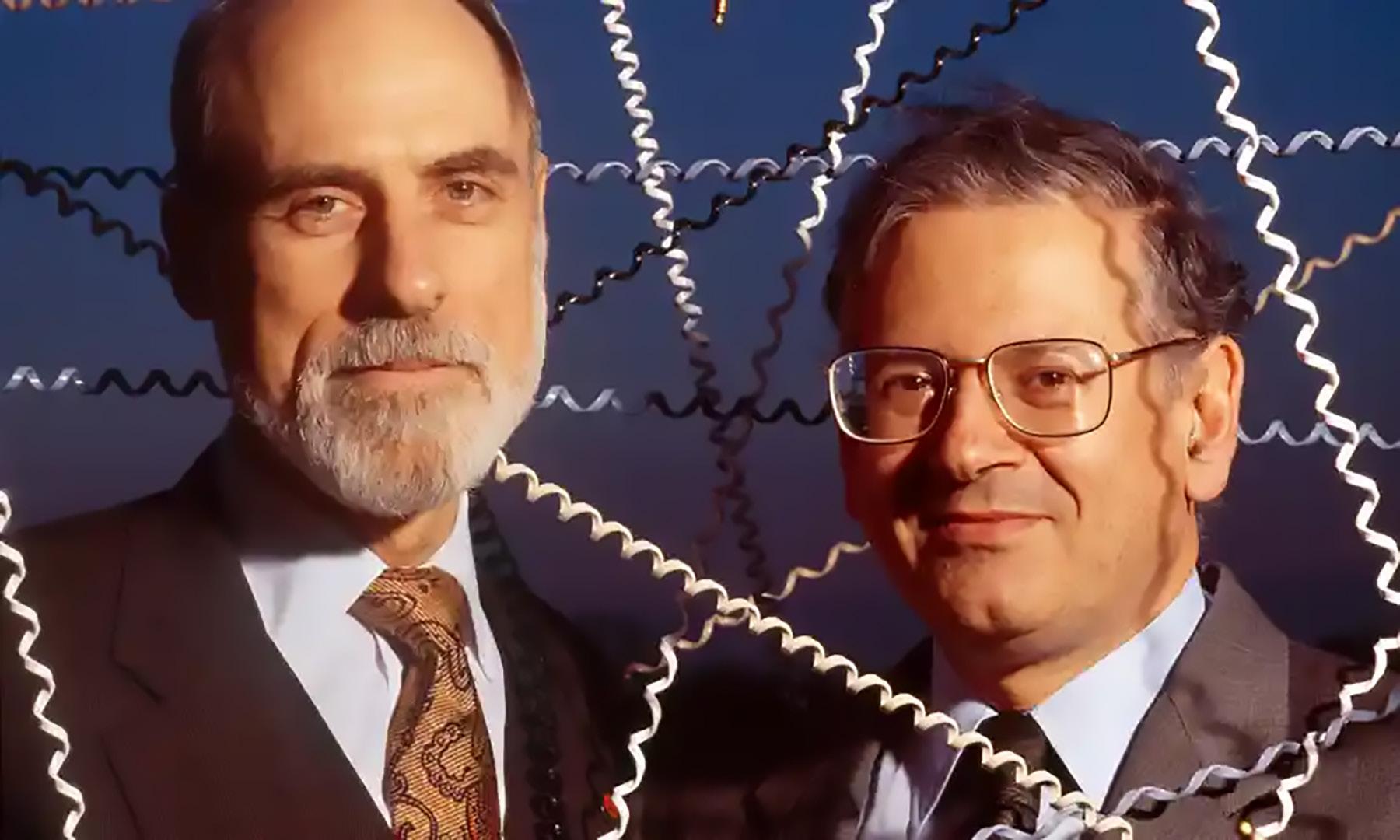

Before the current iteration of the Internet, long-distance networking between computers was first accomplished in a 1969 experiment by two research teams at UCLA and Stanford.
Though the system crashed during the initial attempt
to log in to the neighboring computer, the researchers, led by Leonard Kleinrock, succeeded in creating the first two-node network. The experiment was also the first test of “packet switching,” a method of transferring data between two computer systems.
Packet switching separates information into smaller “packets” of data that are then transported across multiple different channels and reassembled at their destination.
The packet-switching method is still the basis of data transfer today.
When you send an email to someone, instead of needing to establish a connection with the recipient before you send, the email is broken up into packets and can be read once all of the packets have been reassembled and received.
Computer scientists Vinton Cerf and Bob Kahn are credited with inventing the Internet communication protocols we use today and the system referred to as the Internet.
DID YOU KNOW? THE HISTORY OF THE INTERNET.
Discover how the Internet grew to connect billions of people worldwide.
Cerf and Kahn developed a set of guidelines for data transfer using packet switching in 1980, calling those guidelines TCP/IP, or Transmission Control Protocol and Internet Protocol.

The TCP part of the protocol is in charge of packing the data before it moves across the network and unpacking it once it has arrived.
The IP component acts as the trip coordinator and maps the movement of information from its start point to its end point.

While Kleinrock’s experiment proved that a single network between two computer systems was possible, Cerf and Kahn’s TCP/IP provided the
backbone for an efficient and large web of interconnected networks—thus the name “Internet.”
Though other protocols were developed and used before TCP/IP, such as the file transfer protocol (FTP) and network control protocol (NCP), the Internet as we know it today is built on the basis of Cerf and Kahn’s “network of networks.” ◙
SOURCE: SCIENCE.ORG
When you send an email to someone, instead of needing to establish a connection with the recipient before you send, the email is broken up into packets and can be read once all of the packets have been reassembled and received.
Packet switching separates information into smaller “packets” of data that are then transported across multiple different channels and reassembled at their destination.
Vet visits can be the ultimate stressors for pet. No matter how many times they’ve been, it never gets easier for some pups and kitties.
But the good news is that there are several steps you can take to make your next trip a little easier for both you and your pet.
WHAT YOU CAN DO BEFORE THE VET VISIT:

1. REACQUAINT YOUR PET WITH HIS CARRIER.
Take the pet carrier out at least a week before the scheduled appointment so your pet gets used to it being around.


This way, they know that it doesn’t always mean that when it’s out, they are defi-
Spray again before your pet is put inside, as the spray will keep them calm during travel.
You may even consider leaving the carrier out all the time with the door open if they don’t already have a dog kennel they use daily.
You will be surprised to see they may want to visit it when they are scared or even sleep in it on their own accord.
Take the pet carrier out at least a week before the scheduled appointment so your pet gets used to it being around.
CONTINUING FROM PAGE 8
2. TAKE YOUR PET FOR CAR RIDES FOR FUN OR TO NON-VET PLACES.

Head out to a playdate or quick errand that doesn’t require you to leave the car.
That way they know that when they get to go for a ride, it’s not always going to lead to the vet’s office.
3. MEDICATIONS CAN SOMETIMES HELP.
Your pet’s veterinarian has anti-anxiety medications with sedative properties that can calm your pet before the car ride to reduce travel anxiety.
If your pet experiences vomiting or excessive drooling due to motion sickness when in the car, let your vet know so she can give you medication that will prevent nausea and keep their stomach calm for the ride.
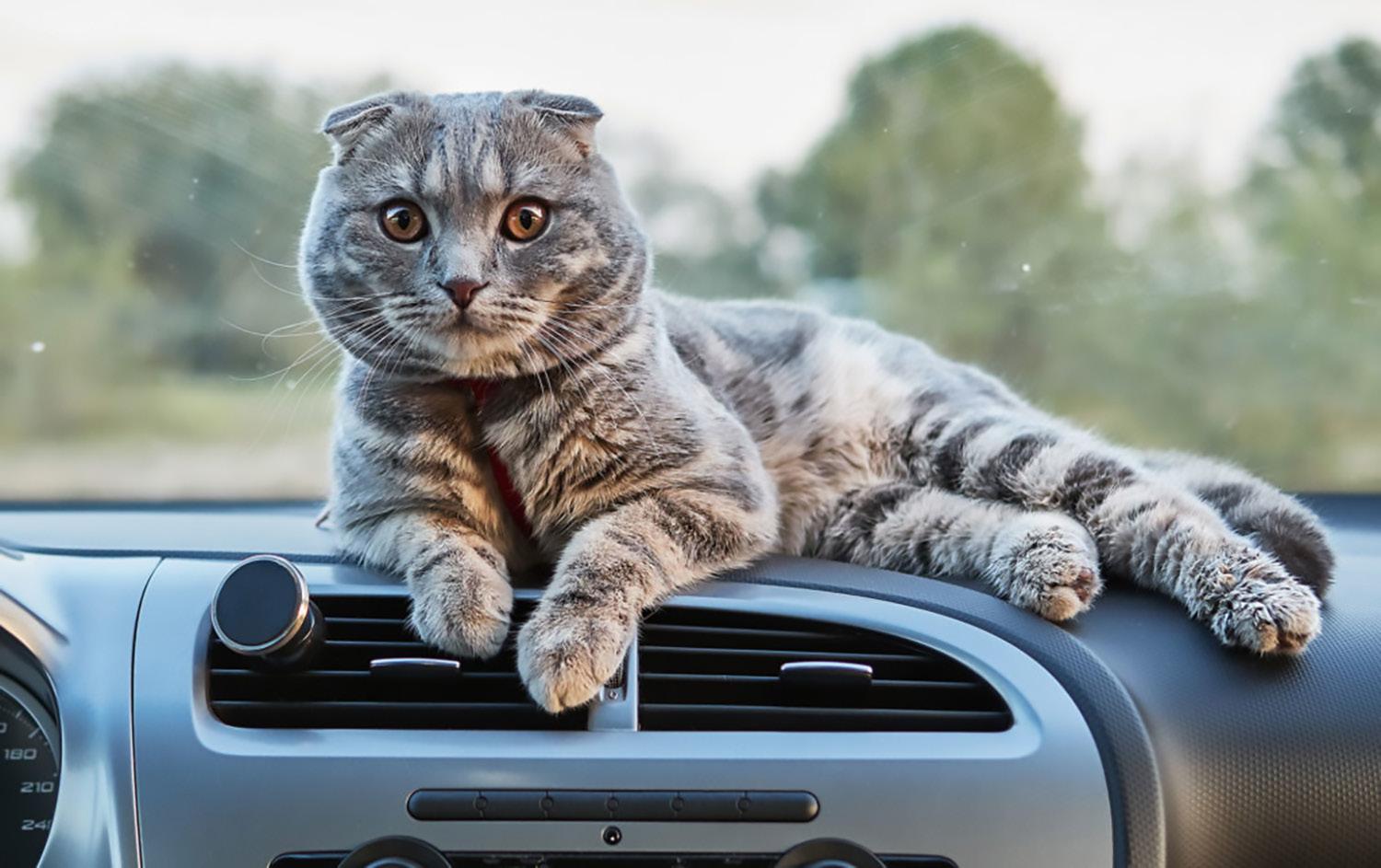
KEEPING YOUR PET CALM AT THE VET’S OFFICE:
Bring your pets to their vet just to say hi!
Nothing tells them not to worry more than just going to the office to be weighed and get a treat from their favorite staff member.
This is even more important for pets that visit regularly for nail trims or grooming appointments, which they definitely are not usually that fond of.
Bringing them there on a day when nothing will be done to them shows them it’s okay to go to the vet all the time.
ASK FOR YOUR VET’S ADVICE.
If your pet suffers from separation anxiety or other anxi-
Head out to a playdate or quick errand that doesn’t require you to leave the car.
ety disorders, their veterinarian most likely already knows.

Discuss with your vet how you can keep your pets calm in the exam room during the exam and for quick procedures.
Perhaps a Anxiety & Calming Solution for Dogs or Anxiety Music & Essential Oil Aromatherapy Dog Calming Vest might help. In some cases, if you get nervous or upset when in the office, your anxiety can exacerbate their anxiety.
If this is the case, it is sometimes better if your pet is separated from you during this time, so you may be asked to leave the room, or your pet may be taken to the treatment area.

Medications can help when you’re at the vet, too.
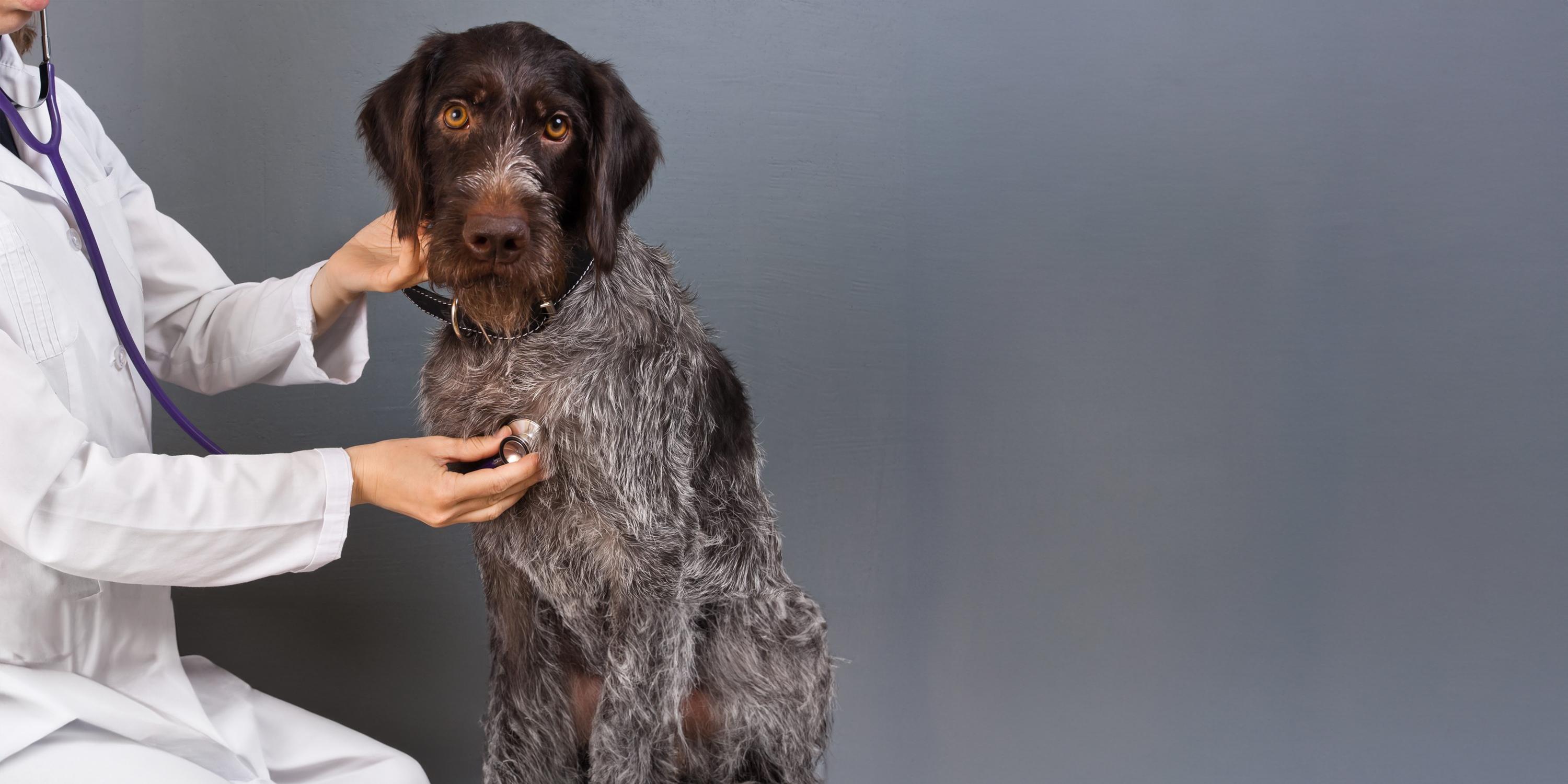
Anti-anxiety medications with sedative properties also keep pets relaxed once they arrive so the veterinarian and staff can finish the visit faster and safer.

This is especially true if your pet’s fear or anxiety has been known to cause him to bite or scratch.
SOURCE: ROVER.COM
Discuss with your vet how you can keep your pets calm in the exam room during the exam and for quick procedures.
Anti-anxiety medications with sedative properties also keep pets relaxed once they arrive so the veterinarian and staff can finish the visit faster and safer.
In a place where many people frequently passed by, a beggar sat on the sidewalk.

Next to him, he placed a sign that read:
"Look how happy I am! I am a prosperous man. I know I am handsome. I am very important. I have a beautiful residence. I live comfortably. I am a success. I am healthy and good-natured."
Some passersby looked at him with intrigue, others thought he was crazy, and still, others even gave him money.
Every day, before going to sleep, he counted the money and noticed that each day the amount was larger.
One fine morning, an important and bold executive, who had been observing him for some time, approached him and said, "You are very cre-
ative! Wouldn't you like to collaborate on a company campaign?"
"Let's go. I must only win!" replied the beggar.
After a thorough shower and wearing new clothes, he was taken to the Company.
From then on, his life was a sequence of successes, and at one point, he became one of the majority partners.
In a press conference, he explained how he managed to go from begging to such a high position.
He said, "Well, there was a time when I used to sit on the sidewalk with a sign next to me that said:
'I am nothing in this world! Nobody helps me! I have nowhere to live! I am a failed man and mistreated by life! I can't get a measly job that

"Well, there was a time when I used to sit on the sidewalk with a sign next to me that said: I am nothing in this world!"
earns me a few bucks! I can barely survive!'
Things were going from bad to worse when, one night, I found a book “BELIEVE IF YOU WANT” By E. Burity , and I noticed an excerpt that said, "Everything you say about yourself reinforces itself. No matter how bad your life is, say that everything is going well. As much as you don't like your appearance, claim to be beautiful. No matter how poor you are, tell yourself and others that you are prosperous."
That touched me deeply, and as I had nothing to lose, I decided to change the sign's words to:
"See how happy I am! I am a prosperous man. I know that I am handsome. I am very important. I have a beautiful residence. I live comfortably.
I am a success. I am healthy and good-natured."

And from that day on, everything started to change; life brought me the right people
for everything I needed, until I got to where I am today. I just had to understand the Power of Words.
The Universe will always sup-
port everything we say, write, or think about ourselves, and this will eventually manifest itself in our lives as reality.
If we say that everything is going wrong, that our appearance is horrible, that our material possessions are insignificant, the tendency is for things to get even worse, as the Universe will reinforce them. It materializes all our beliefs in our lives.
A reporter, ironically, asked: "Are you trying to say that a few words written on a simple plaque changed your life?"
The man replied, full of good humor, "Of course not, my naive friend! First, I had to believe them!"
I received this via the internet, and I want to share it with you. I'm sure you'll like it too!" ◙
Everything you say about yourself reinforces itself. No matter how bad your life is, say that everything is going well. As much as you don't like your appearance, claim to be beautiful. No matter how poor you are, tell yourself and others that you are prosperous.
Sfined as the use of progres sive resistance, such as lifting free weights, to increase the ability to exert force or resist force.
During exercise, certain ener getic substances are manipu lated within the muscles.
This metabolic situation is called CATABOLISM, which means aggression or a "break. In response to this situation, physiological ad aptations occur, enabling the individual to better with stand new challenges. In other words, the individual becomes stronger and more resistant. Muscle grows pre cisely through exposure to wear and tear.
Anabolism, on the other hand, is characterized by protein synthesis and rest after training. In this ana


Strength training can be defined as the use of progressive resistance, such as lifting free weights, to increase the ability to exert force or resist force.


Amino acids from dietary proteins are what form lean mass (muscle). Therefore, it is essential to
bolic process, which begins immediately after training, the consideration of proteins can determine the results in terms of muscle recovery and an increase in lean mass.

Amino acids from dietary proteins are what form lean mass (muscle). Therefore, it is essential to be concerned about consuming protein when undergoing any type of physical activity.
CONCLUSION:
These include anabolic specifics (such as muscle growth): weight training, protein chronobiology, rest, and recovery.
Examples of proteins - oats, chicken, tuna, fish, egg whites, cashew nuts (which have a high fat content), beef, soy, crustaceans (which have a low amount of fat but can be difficult to digest), milk and its derivatives (notably, they contain important minerals crucial for blood formation, making them valuable in
the fight against infections), and liver (where vitamin D, the most important vitamin for growth, is found in abundance).
QUESTION:
Hi, teacher. I am passionate about your way of imparting knowledge, may God bless you with good health and wisdom. My question pertains to a matter close to the heart, as my husband has high blood pressure, and we would like to know if weight training is detrimental to his condition.
Thank you. Sincerely, Maria do Carmo Magalhães. CT

RESPONSE:
Hello, Maria do Carmo, and thank you very much for your encouragement. There is a lot of doubt, misinformation, and resistance regarding the effects of weight exercises on cardiovascular health.
We often encounter the statement that "weight training is
good for aesthetics, but coronary arteries require aerobic exercise." Whether to accept this statement or not is not a matter of opinion. The stance of the main international scientific entities is as follows: Any type of exercise contributes to preventing coronary heart disease.
A well-known fact is that exercising with weights can induce a significant increase in blood pressure.
This explains why many health professionals still hold the idea that weight training or bodybuilding carries a high cardiovascular risk.
However, the low incidence of cardiovascular accidents in weight training has provided more peace of mind to modern professionals and athletes.
Let's understand what happens when we exercise: The heart starts beating faster to meet the demand for oxygen.
It's essential to remember that the most significant benefit of training is supplying the body with oxygen.
The increase in heart rate leads to an elevation in blood pressure, which, up to a certain point, does not harm health.
The key is to monitor this heart rate, dedicate more time to aerobics, and maintain a consistent diet.
I recommend that your husband does engage in weight training, but always with an overall focus on his health and well-being. ◙
During exercise, certain energetic substances are manipulated within the muscles. this metabolic situation is called CATABOLISM, which means aggression or a "break".
Have you ever wished you were an eagle, soaring high above the prairie? How about the mythical phoenix, rising from the ashes?
For centuries people have wistfully watched birds take wing and felt a bit jealous. But what about birds that don’t fly? You’d think they’d hold a grudge against their freewheeling cousins, but these guys are just as awesome in their own right. These eight birds can’t fly, but you should probably envy them anyway.

STEAMER DUCK
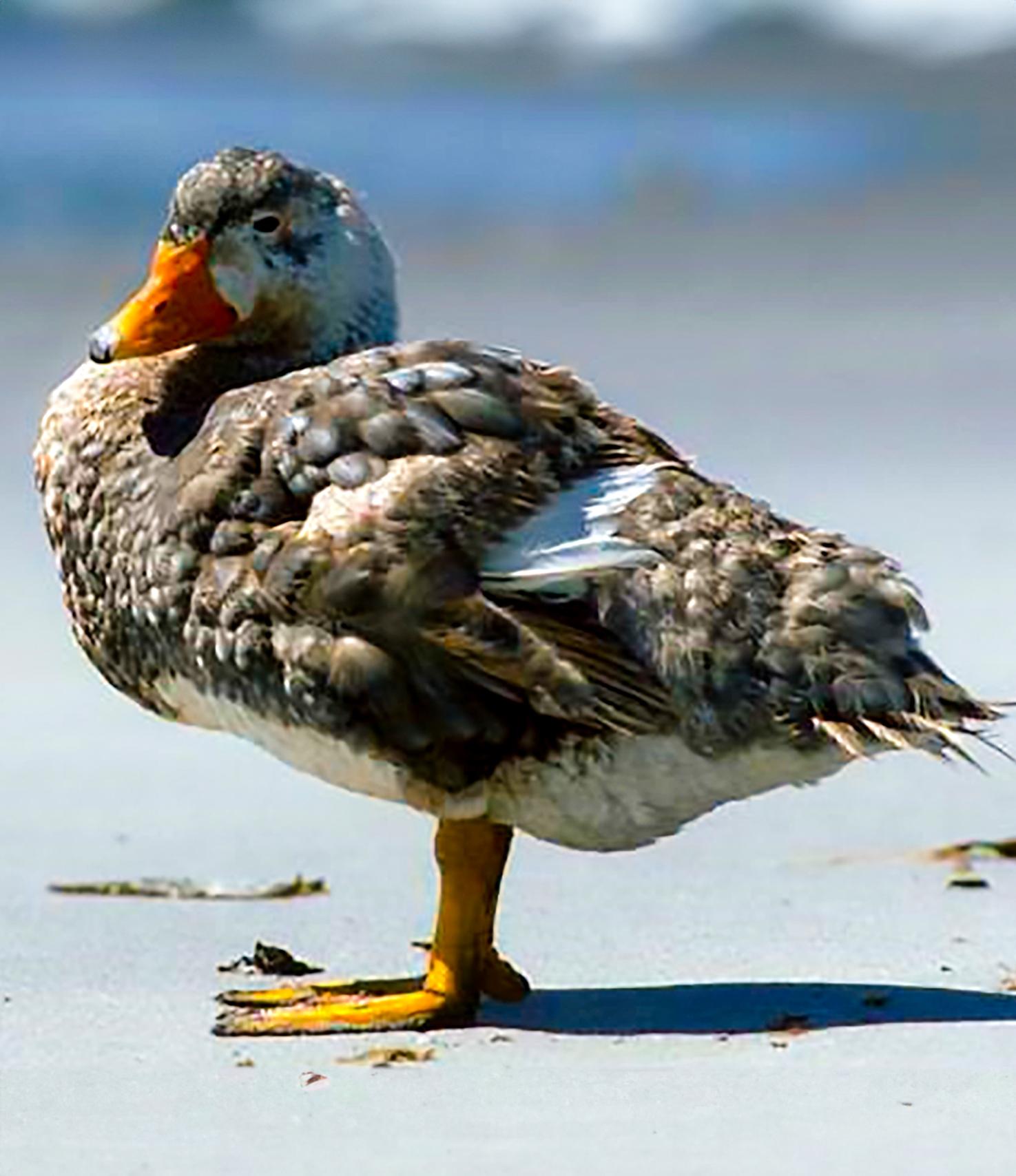
Three out of four species of steamer duck are flightless, but four out of four species should not be messed with. Even within the flighted species, some males are too heavy to actually achieve liftoff. These South American ducks earned their name by running across water and thrashing their wings like the wheels on a steamboat. They use them for other forms of thrashing, too. Famously aggressive, steamer ducks are known to engage in epic, bloody battles with each other over territory disputes. They have even been known to kill waterbirds several times their size.
PENGUIN
No list of flightless birds would be complete without the penguin. All 18 species of penguin are unable to fly, and are in fact better built for swimming and diving, which they spend the majority of their time doing. Their short legs and stocky build give them a distinctive waddling walk. While people tend to associate penguins with Antarctica, most species live in higher latitudes. A few even live in temperate climates, and the Galapagos penguin actually lives at the Equator. These birds are also remarkably romantic — penguins are largely monogamous and seek out the same mates each season, even among the hundreds or even thousands of birds that might live in their colony.

CONTINUING FROM PAGE 17
The Weka is another bird of New Zealand.
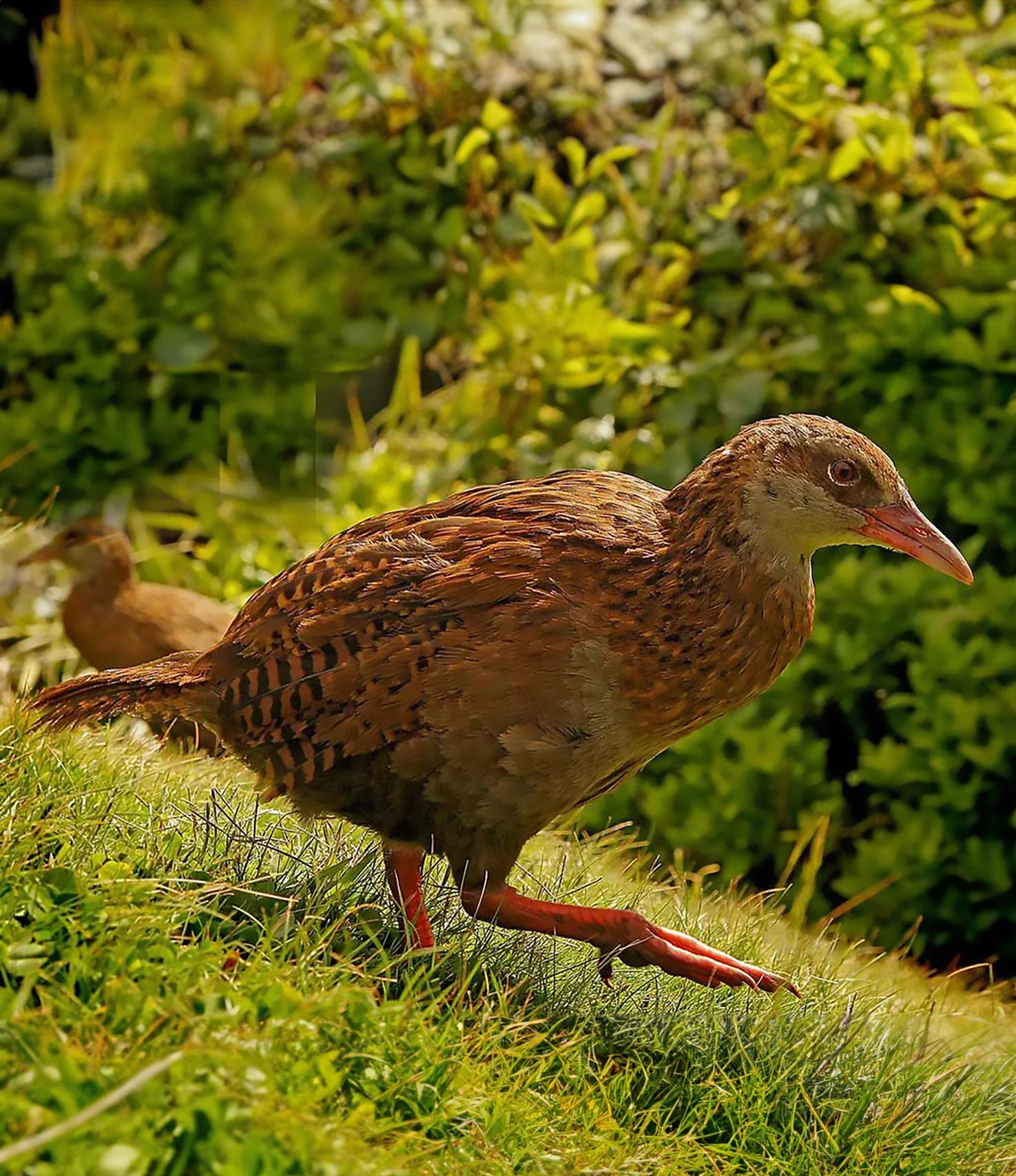
This brown, chicken-sized bird was an important resource for native New Zealanders and European settlers, but is now decreasing in number.
While they may look unremarkable, Weka have a loud call that males and females sing as a duet.
They’re also known as clever thieves and will steal food and small objects to their liking and make off with them. Weka are skilled swimmers, too.
The mighty ostrich is truly the king of birds.
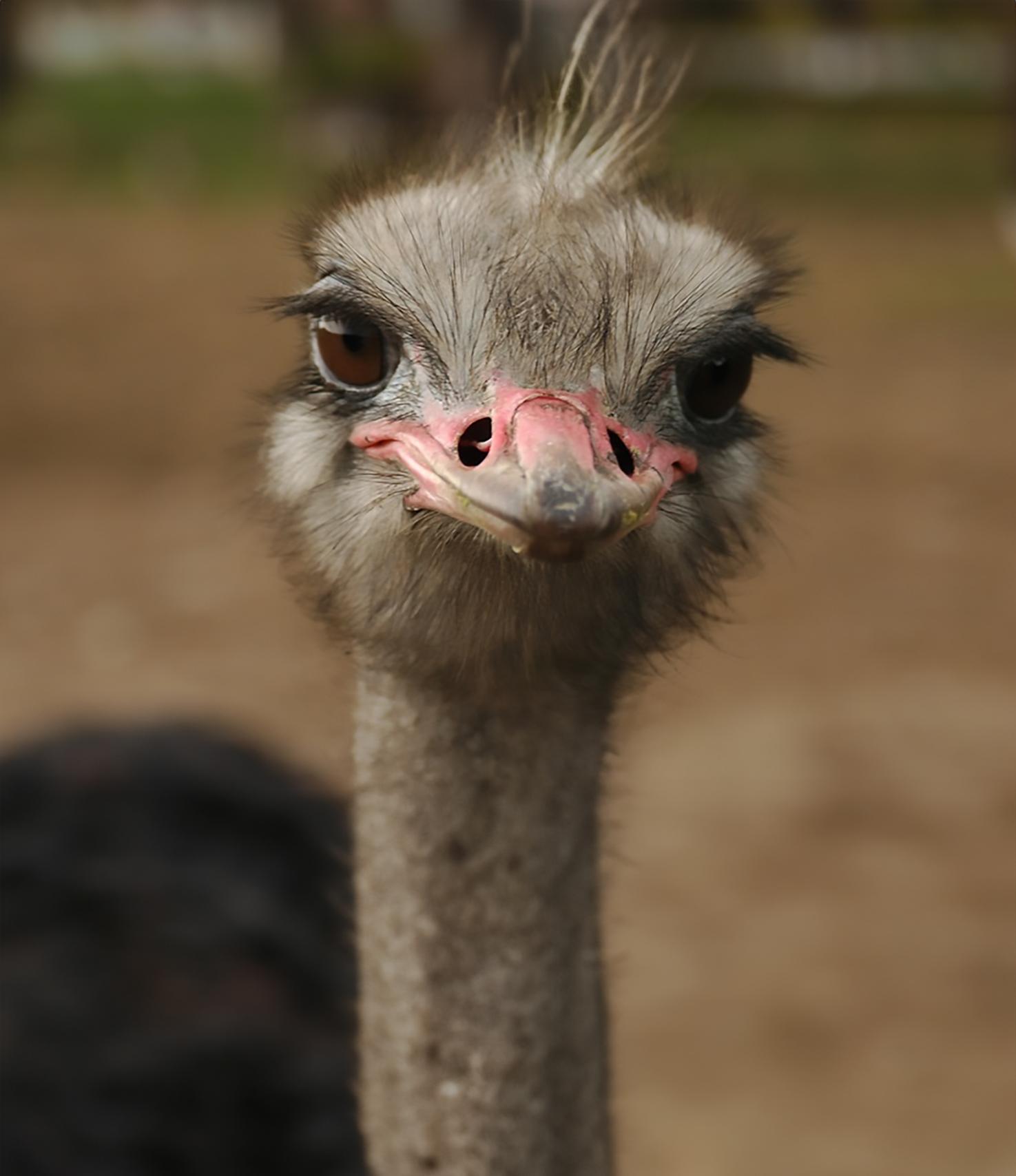
The largest living bird, ostriches can grow up to 9 feet tall and weigh more than 300 pounds. Their eggs, fittingly, are also the world’s largest—about 5 inches in diameter and 3 pounds in weight.
Their powerful legs can kick in defense, and they can run at speeds up to 45 miles per hour across the open lands of Africa, where they live. And if that’s not enough, they have long, luxurious eyelashes, to boot.
CONTINUING FROM PAGE 18
There are five species of kiwi, brown chicken-sized birds that are found in New Zealand.

They have hidden vestigial wings and soft, hairlike feathers. Unlike other birds, kiwis have their nostrils on the tip of their bills, instead of at the base.
These odd little birds are worth admiring, though—the females lay eggs that can be up to 1 pound in weight. Relative to the size of the bird, this is the biggest egg of any living species.
The kakapo, also known as an “owl parrot” is also a native of New Zealand. This nocturnal parrot has an owl’s face, penguin’s stance, and duck’s gait.

It is truly a strange bird—but also a beautiful one, with bright green-brown feathers.
It can grow up to 2 feet in length, and is the world’s heaviest parrot.
CASSOWARY
The cassowary is a bird you don’t want to mess with. This giant bird, a native of Australia and the surrounding islands, is in the heavyweight class. The only bird heavier is the ostrich.
As if that isn’t enough, the cassowary sports a wicked daggerlike claw that can grow up to 4 inches long on the middle toe of each foot —and they’ve been known to kill humans. If deadly power isn’t your thing, though, you can still admire the cassowary’s style.

These birds sport colorful helmets, or casques, made of keratin (like human fingernails). And their plush back feathers kind of look like glamorous fur capes.
This mid-size bird of New Zealand is a hide-and-seek master.
It was thought to be extinct from the late 1800s until it was suddenly rediscovered in 1948.
It’s a colorful character, too, with bright blue and green plumage and a red bill. And for a bird, the takahe has remarkable longevity—it can live up to 20 years.

